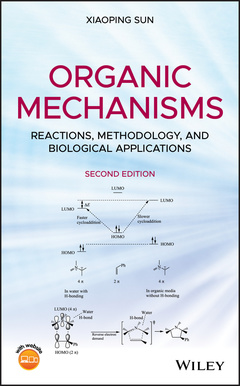Description
Organic Mechanisms (2nd Ed.)
Reactions, Methodology, and Biological Applications
Author: Sun Xiaoping
Language: English
Subjects for Organic Mechanisms:
528 p. · 15.8x23.1 cm · Hardback
Description
/li>Contents
/li>Biography
/li>
This book helps readers move from fundamental organic chemistry principles to a deeper understanding of reaction mechanisms. It directly relates sophisticated mechanistic theories to synthetic and biological applications and is a practical, student-friendly textbook.
- Presents material in a student-friendly way by beginning each chapter with a brief review of basic organic chemistry, followed by in-depth discussion of certain mechanisms
- Includes end-of-chapter questions in the book and offers an online solutions manual along with PowerPoint lecture slides for adopting instructors
- Adds more examples of biological applications appealing to the fundamental organic mechanisms
Preface xv
First Edition Preface xvii
1 Fundamental Principles 1
2 The Aliphatic C─H Bond Functionalization 53
3 Functionalization of the Alkene C=C Bond by Electrophilic Additions 95
4 Functionalization of the Alkene C=C Bond by Cycloaddition Reactions 143
5 The Aromatic C─H Bond Functionalization and Related Reactions 199
6 Nucleophilic Substitutions on sp3-Hybridized Carbons: Functional Group Transformations 257
7 Eliminations 317
8 Nucleophilic Additions and Substitutions on Carbonyl Groups 367
9 Reactivity of the α-Hydrogen to Carbonyl Groups 417
10 Rearrangements 457
Index 493
XIAOPING SUN, PHD, is Professor of Chemistry at the University of Charleston, Charleston, West Virginia. He has twenty years of experience teaching organic chemistry, biochemistry, and inorganic chemistry.




